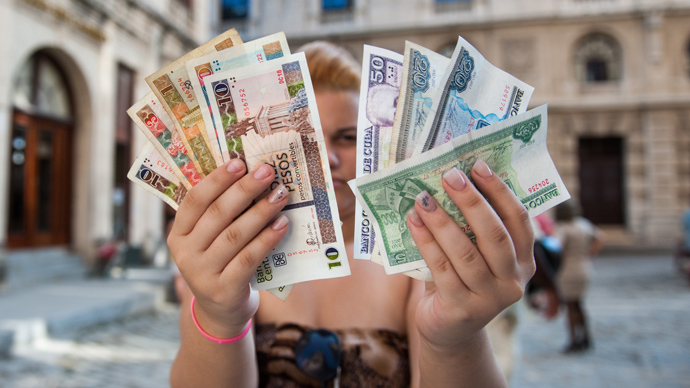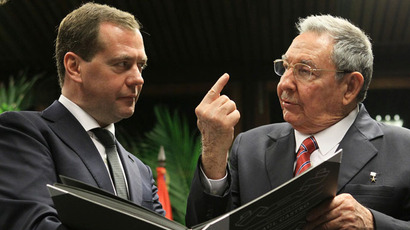Cuba hopes abandoning two-currency system will boost economy

President Raul Castro has announced Cuba will no longer use the two currency financial system the country has relied on since 1994, which has long been unpopular with ordinary Cubans.
For nearly a decade Cuba has employed a two-tier system with national pesos and convertible pesos. Convertible pesos (CUC), which are more valuable, were only permitted to be used in the tourism industry and in foreign trade dealings. It will now be slowly combined with the national pesos (CUP) in a strategy that aims to curb the vast inequality that has plagued Cuba since the collapse of the Soviet Union.
The mostly state-run economy adopted the two currency system as a safeguard to protect Cuba’s financial sector from any danger that would come with the sudden adoption of capitalism. Yet the policy inadvertently ushered Cubans who work in the tourism industry into relative wealth and the rest of the nation into stark lower class conditions.
Combining the two currencies is expected to raise pay for local workers and eliminate a major hurdle for importers and exporters. State newspaper Granma announced Tuesday the “measures that will lead to monetary and exchange unification.”
“(Unification) is imperative to guarantee the reestablishment of the Cuban peso’s value and its role as money that is as a unit of accounting means of payment and savings,” the statement said.
“The main changes in this first phase will be in the business sector to foster conditions that will lead to increased efficiency, better measurement of performance and the stimulation of sectors that produce goods and services for export and the substitution of imports.”
Cuban economists who spoke to Reuters said the process is expected to take 18 months and may revalue the peso along with devaluing the CUC. The government promised to give citizens time to convert their finances.
Economist Juan Triana at Harvard University’s Center for Cuban Economic Studies expressed hope, but pressed the government to provide more details in the face of such a complex initiative.
“This will eliminate the crazy situation today where a company is profitable in dollars and runs at a loss in pesos, and may allow these companies to improve their workers’ wages,” he said.
This news comes after Castro promised to dismantle some socialist minded programs and begin allowing individual Cubans to run their own private businesses and buy and sell property.
The sudden changes may also contribute to inflation spikes, as well as contribute to changing the long-standing social hierarchy on the island nation. No more would there be massive financial bonuses for state-owned businesses that reap the benefit of the Cuban government’s policy of treating the two currencies on an equal basis despite the actual value gap.
“Whoever is getting these dollars at one-to-one is doing well, and that’s the official sector,” Rafal Romeu, former president of the US-based Association for the Study of the Cuban Economy, told the Associated Press early in October. “They would be basically confronting their budget constraint in a serious way, and I don’t think they are ready to do that. They would have to cut a lot of social services.”














